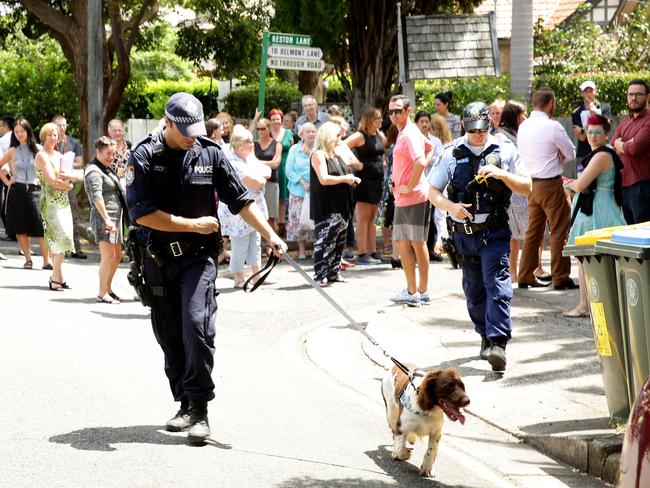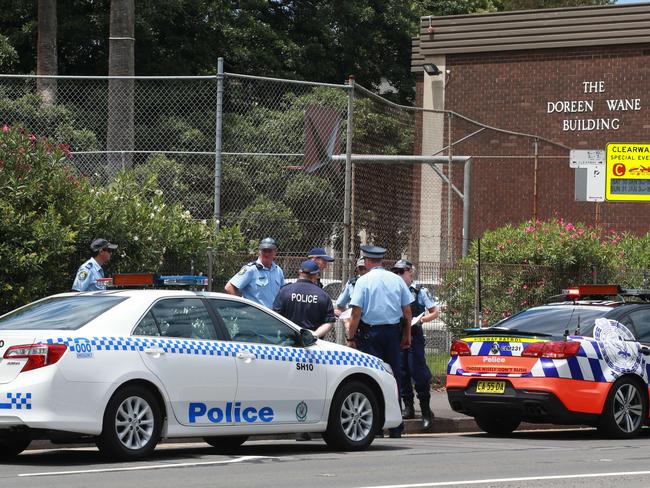What’s behind the wave of hoax school bomb threats?
A TOP Victorian school has been linked to the wave of terrifying hoax calls that were made to schools throughout the state last week.

School Life
Don't miss out on the headlines from School Life. Followed categories will be added to My News.
POLICE in Victoria are investigating whether threatening calls made to several schools originated at an elite local high school.
Sources within the education sector have told the Herald Sun that calls made on Friday had been linked with Nossal High School — although it is unclear whether the school’s telecommunications had been accessed to make it appear the calls came from there.
Last week’s calls to Victorian schools were part of a wave of hoaxes made against schools throughout Australia.
Calls have been placed to schools in NSW, Queensland and Canberra, causing major disruption for students, staff and police.
Despite knowing they are likely to be hoaxes school authorities have been grappling with how to respond to them.
Do they ignore the calls and quietly carry out an internal investigation without a full-scale evacuation? Or treat each and every one seriously and get everyone out as quickly as possible?
Yesterday there were more calls made, more threats, and more disruption — and that’s exactly what the people making them want.
A group of hackers called Evacuation Squad claimed responsibility via Twitter for some of last week’s threats, but authorities have not confirmed the claim.
The international group told Mashable there were more to come, with Evacuation Squad member “Viktor Olyavich” claiming his squad was made up of six people and mainly using servers in Russia and Iran.
Nick O’Brien, the associate professor of counter-terrorism at Charles Sturt University, told news.com.au the aim of their game was disruption and spreading fear.
“If you took a major sporting event, if someone calls with a bomb threat, authorities have to make decision if they evacuate the event or let it go on,” Prof O’Brien said.
The obvious danger was if they did nothing — and there was a bomb — lives could be lost.
“The fact is though terrorists very rarely forewarn of any attacks. The IRA [used to], but they did that purely for disruptive reasons.”
These days such a tactic is rarely used.


He said major events, such as the Australian Open at Melbourne Park, were secure and had been searched thoroughly before the event began. This gave authorities a degree of confidence when threats came through.
But a school is not as well guarded, so the chance of a hoax call being real was drastically higher.
And that’s the dilemma for school authorities and the police. Ignore it and it will probably be all right, or risk placing many lives at risk?
“You’ve then got to make that judgment,” Prof O’Brien said.
People making these threats could have many different motivations for a calling in hoax bomb threats.
“They could have a particular grudge against a certain place or event, also people who are fixated or mentally imbalanced might do it.”
So too could supporters of terrorist groups, like Islamic State. “There’s all sorts of people who might want to make those hoax calls like this. It’s just a matter of a judgment. And it can be a difficult one to make.”


That heaped pressure on schools, police and security services. “Especially when you’re talking about schools, you get this emotive thing around children.”
Another possibility was people who made calls were children themselves. “They could have gone onto the internet and learned how to build a crude device, because you can do that these days. So it’s not just terrorists.”
In the UK, where Mr O’Brien used to be in charge of international counter-terrorism in Special Branch at New Scotland Yard, they referred to this sort of threat as “10p terror” — because that was the price of a national call from a phone box where these “cheap” threats were made.
NSW Police said today it believed the latest threats appeared to be made from outside Australia, but the exact purpose and source were unknown and were being investigated by State Crime Command’s Fraud and Cybercrime Unit
A police statement said it was clear there was a pattern of hoax calls designed to cause disruption and attract media attention.
Similar hoax calls have been made recently in Europe, the US and Guam.
In response to the hoax calls, a spokesman for the NSW Department of Education told The Australian a number of steps were being taken to ensure staff and students were safe.
“Each school is taking precautionary measures to ensure the safety of its students.”
Neil Fergus, the chief executive of Intelligence Risks, a company that carries out a range of security reviews for government departments and the private sector, said it was major concern.
“Certainly international law enforcement are intent on tracking where it’s generated from.”
His company recently held a workshop for about 50 principals where they spoke about the need to have emergency plans ready to go.
“It won’t stop the disruption, but it’s going to mean these types of events are managed more efficiently and with less risks to students and staff because the emergency plans include evacuation plans and muster assembly points. It’s not exciting or glamorous, but it’s essential.”
He didn’t think the calls would be a “high priority” for senior members of the Islamic State, for example, but it could well be someone who is a member or associated. “But that’s pure speculation.”
“I do know the counter-terrorism command in NSW and other police forces nationally and internationally are looking hard at this. Because someone has gone to some effort to disguise themselves — and unless they’re identified they’ll do it again and cause further disruptions.”
andrew.koubaridis@news.com.au
Originally published as What’s behind the wave of hoax school bomb threats?



